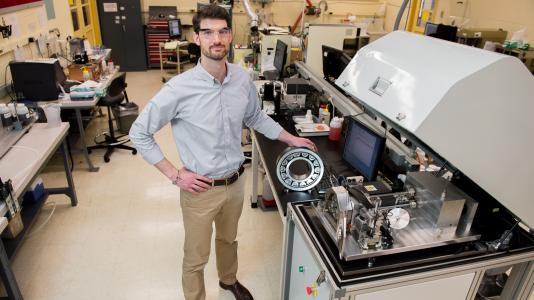
This article was originally published in the spring 2016 issue of Argonne Now, the laboratory’s science magazine.
1. Tribology studies the wear and tear of things
Objects rubbing together cause friction which eventually wears down one or the other surface. Finding ways to reduce this friction—in your knees, in an engine, or in factory machinery—can help scientists develop stronger materials that last longer and slide easier, which increases efficiency.
2. Your car wastes about 13% of the gas you buy
Gas engines waste about 13% of their fuel overcoming friction created by all the mechanical sliding and rotating parts within the car. Increasing this efficiency by just 10% for cars would mean importing 100,000 fewer barrels of oil every day.
3. It’s not me, it’s you
When your artificial knee or hip hurts, it’s not the gadget, but the body’s natural defenses that wear you down. The act of walking, bending, or stretching rubs off molecule-sized pieces of metal or plastic, which the body sees as foreign objects. Irritation results as the body tries to repair itself, causing the joint to loosen or cause pain.
4. No WD-40 allowed in space
Lubricants like oil used for our machines here on the ground won’t work in space. In a vacuum, oil quickly evaporates, increasing the amount of friction on moving parts and causing gears to grind to a halt.
5. Wind turbines do the wobble
With an average height of 370 feet, wind turbine blades cover a lot of area. Because of this, blades at the top experience faster wind speeds than blades at the bottom, causing a wobble as the blades spin. This back and forth vibration can cause increased wear on the bearing and gears within the wind turbine’s gearbox.
6. An oil’s chemical additives, necessarily, pave the way
About 15% of the oil we use in cars and other machines consists of a chemical cocktail that helps prevent foam, slow corrosion, prevent oxidation or rust, and allow you to pour oil in sub-zero temperatures.
7. The fault is that there is no friction in the fault
The earth’s surface is a 3-D jigsaw puzzle with large sections that move, very slowly, all the time. Sections that stick together at the fault line store up energy as other sections move. When the force of the moving sections overcomes the friction of the sections that are stuck together, they slip, releasing energy like a ripple in a pond. In other words, an earthquake.